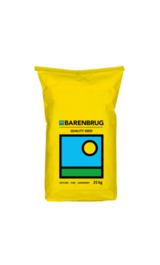Persian clover is mostly used as an annual forage due to its excellent regrowth. It is slow to cure as hay, therefore roller conditioning may be advantageous when utilized as hay. Persian clover has very small seeds which require a fine, weed free seed bed and it should be sown no deeper than 10mm. Its ability to reseed varies depending on external factors and the variety. It has low levels of oestrogen but can be a bloat risk if not managed correctly. It is intolerant of acid and sandy soils and is very susceptible to red-legged earth mite and lucerne flea.
SHAFTAL
- Late season maturity – approximately 160 days to flowering
- Soft seeded
- Historically known as Shaftal clover
- Vigorous and erect growth but susceptible to rust
- Can be sown with oats or tetraploid ryegrass
- Tolerates waterlogging and mild soil salinity



